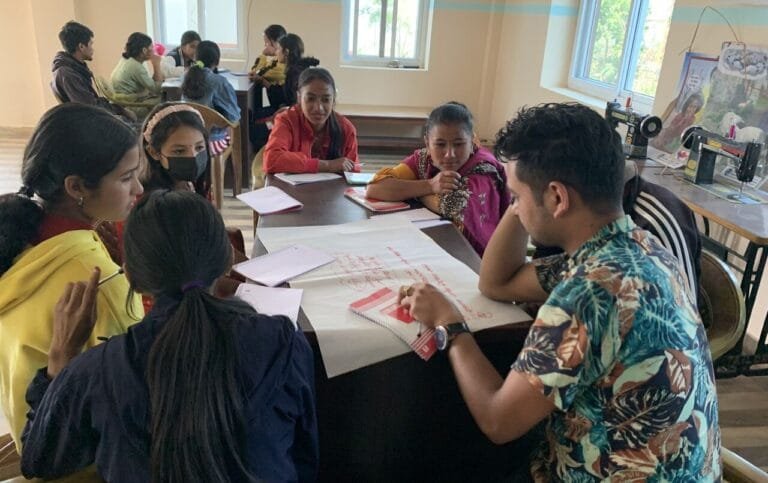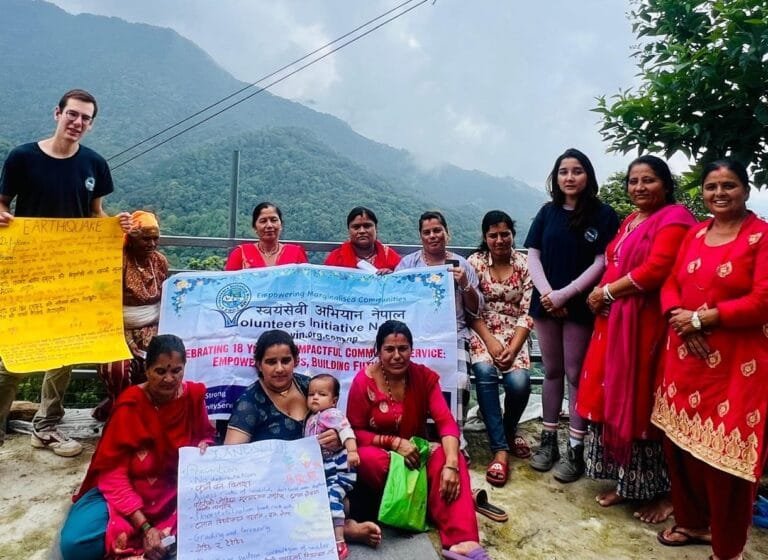
Just two minutes before the workshop, I learned that “due to a festival in the village, the afternoon session is cancelled.” A handful of people attending the morning workshop were waiting in the garden, sitting on the swings, chit-chatting. We were expecting fifteen—they might still come, and they might attend the festival, but it was not clear. We asked if they came for our session. “Yes, for a ViN-workshops.” “For English, right?”, we clarified. But they had no idea it was going to be an English session.
I went to a hidden corner of CLC to calm down and restructure the English lesson plan in my head. I was upset because the thought and effort I put into planning the English lesson seemed to be in vain. I was stressed because once again there was a last-minute change of plans. I was angry because I still could not get used to the different communication style. So, I wanted to quickly manage my frustration and afterwards return to the students with my full attention and focus.
Returning to the classroom, my colleague and I gave an engaging and educational session. After a revitalising lunch, we reflected on what happened. The lessons learnt that day proved to be extremely useful in planning and delivering the upcoming sessions. And, believe it or not, with each further session, we did learn new lessons. If you want to minimise initial stress and be as prepared as possible for your workshops in Okhaldhunga, here are a few useful tips courtesy of our first three months.
First, how did I end up as a part-time English teacher in Okhaldhunga?
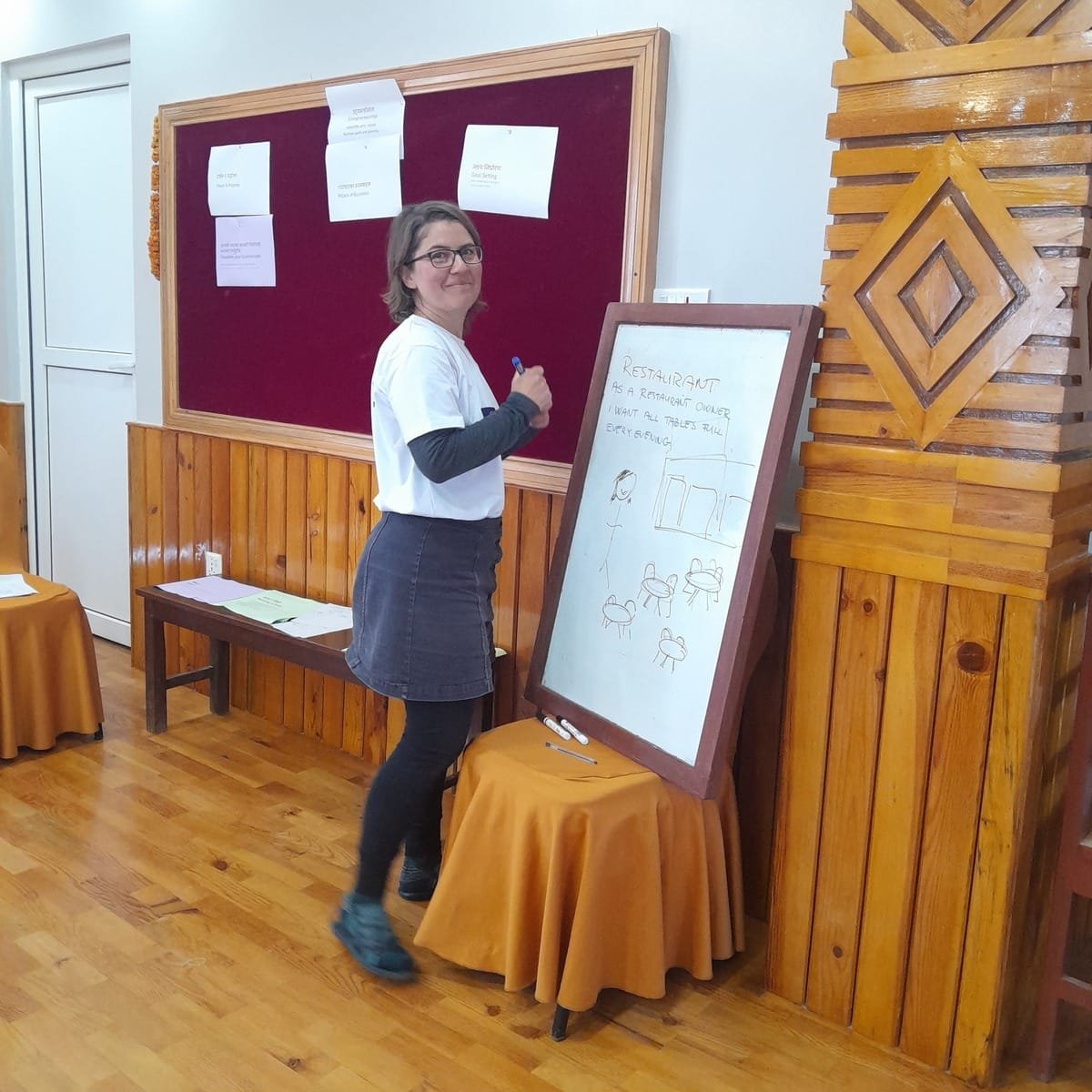
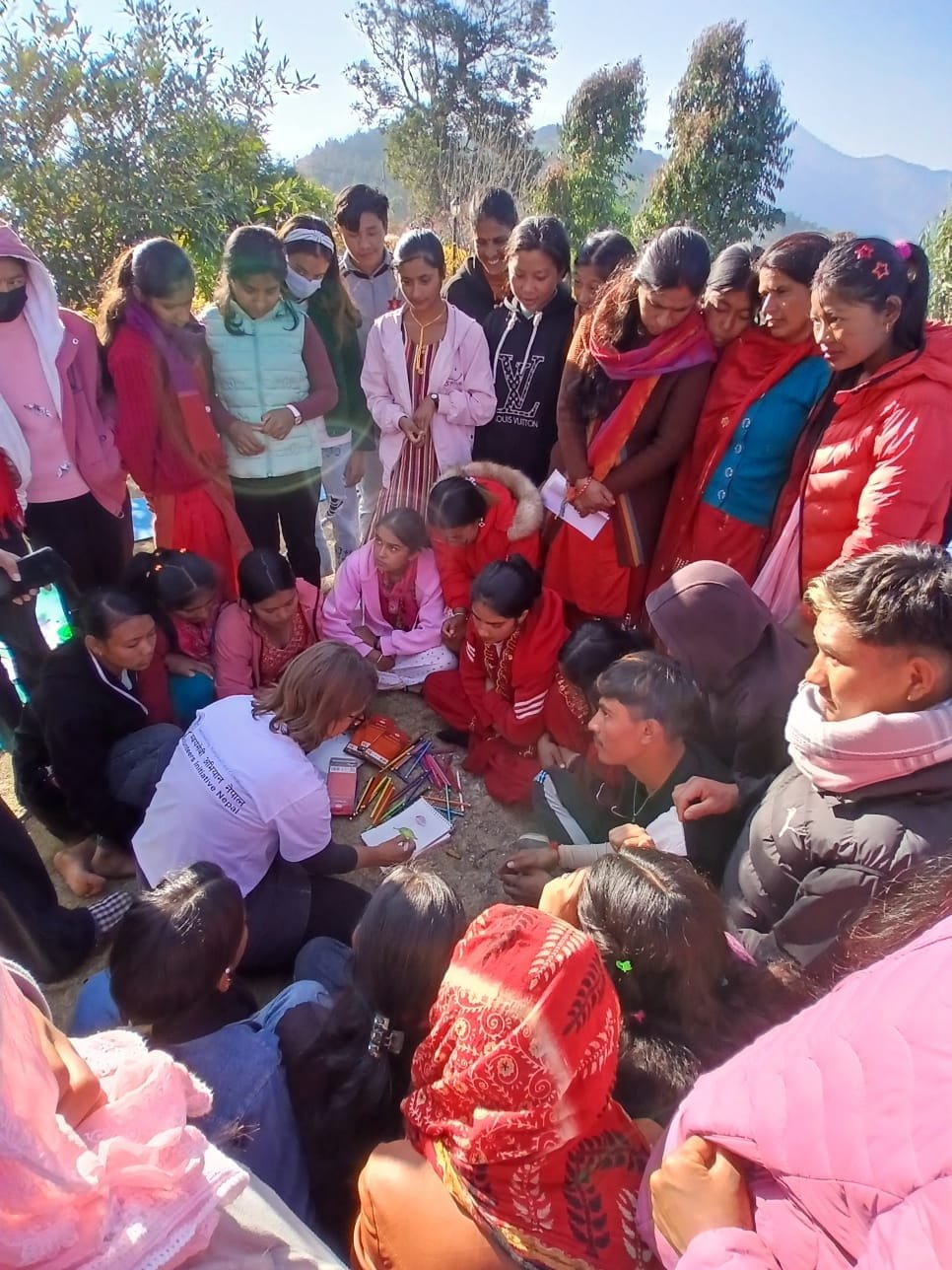
I came to Okhaldhunga with the European Solidarity Corps (Volunteering in Humanitarian Aid | European Youth Portal) at the 11th hour—just before turning 36. To work on youth employment and youth empowerment in rural Nepal seemed to be the perfect place to use my accumulated experience. Even though I lived in capital cities most of my life, I spent one year prior to the project in rural Germany and took a course on outdoor education to understand nature and rural conditions better. For six years, I was facilitating trainings on career choice. And, fifteen years after my semester abroad in Peru, I was ready to get to know another culture in an immersive, long-term experience. Delivering workshops on career and entrepreneurship to youth in Okhaldhunga seemed to be a perfect place to use my business administration and start-up experience. One of the project’s objectives was boosting the English skills of young people—for inspiration, I could turn to my first year of high school, with its 20 weekly hours of English.
Having given workshops to different audiences over the past decade and having worked with different cultures for twenty years, I was ready for the challenges and adventures of this ViN project. Yet, there are a few local features that I wish someone had warned me about when we were preparing our sessions.
What to consider before planning your session?
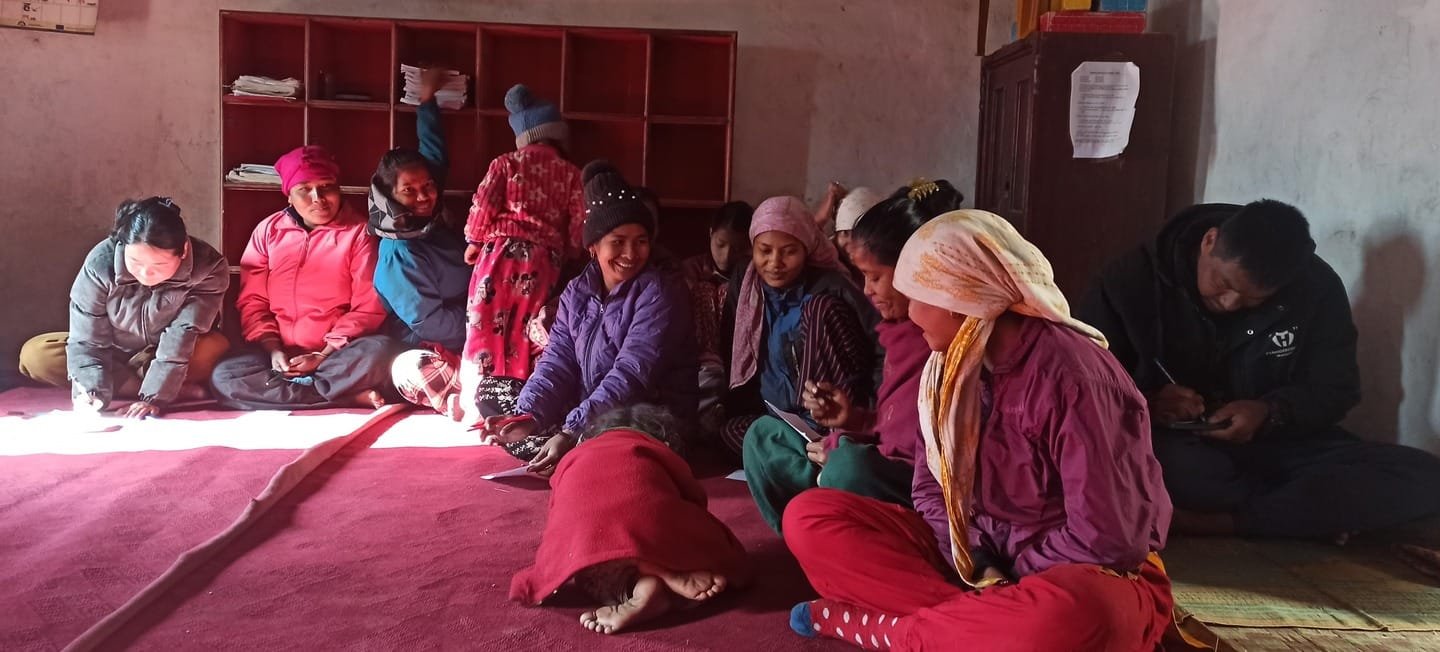
When can you give a workshop?
In theory, any time. But, in practice, as with any audience, it is best to adapt to the preferences of your target audience. In Bhadaure, Taluwa and Thulachhap, most people work as farmers. Even if that is not their main profession, their property often includes small or large plot of farmland that need tending to, and a few chickens, goats or pigs that need daily care as well. As such, their daily routine starts as early as 5 or 6 in the morning with the household chores.
School starts at 10am from Sunday to Friday and involves a walk to school that takes up to two hours for some. Classes finish around 4pm, after which students either meet at the volleyball field or hang out in one of the local stores for tea or Mountain Dew, for a game of carrom board (Carrom – Wikipedia). On Fridays, school finishes after lunch and students either attend co-curricular activities or are on the volleyball field.
University classes, however, take place before and after school. As most university students either teach or work in offices, their sessions start as early as 7 in the morning, sometimes online, sometimes in person. Evening classes are mostly online for both local universities and the ones in Okhaldhunga city.
Farmers will spend most of the day in the fields. In the rainy season and especially during the harvest season (September-November), they will be busy all day. But even in winter (dry season), they will have to cater to their animals: goats, cows and buffalos need their fresh daily greens! Most of them are members of different collectives and communities. These groups meet on a monthly basis, in groups of approximately 20 people.
In Nepal, Saturday is the only official rest day. In theory, people are free to do as they please. Their weekend plans, however, might include selling their produce at the Okhaldhunga market, visiting Okhaldhunga or Rumjatar for their chores, or attending family/village festivities (there are a lot more of them going on than you’d think). Yet, this is when people are most flexible.
Where can you give a workshop?
Organising a session at NaraTika Community Learning Centre. in Nishanke is tempting. Logistically, preparation and flexibility would certainly be easier. You can use all the facilities: projector, speaker, Internet, whiteboard, printer, different room arrangements and so on. However, as the building sits on top of the hill, it might be a 3-hour hike for some of the attendees. During the week, people who live and/or work further away might not have the time.
Schools can be a good venue for workshops, too. Of course, if you work with the students, that is where you are most likely to find them. But even for other age groups, the school is an easy choice: they all know the place (some of them will have probably studied there, too) and it is easy to access. Unfortunately, not all schools are as well equipped—some may not have whiteboards, chairs or desks. If you organise a meeting during school time (not for students), you will also have to deal with the curiosity of young children peeking through windows, doors, or anywhere they can.
Besides schools, there are other community meeting areas. It can be next to a school that closed down due to too few students, in the shadow of a giant peepal tree, on the porch of the local store or at someone’s house. Once again, the benefit is easy access—especially if you can plan your session at the end of a local cooperatives meeting. The big challenge is, once again, logistical, such as the lack of white board and chairs. This should not hold you back, however, as the locals are always willing to be flexible, sitting on bamboo mats around a flipchart taped to the wall.
How can you give a workshop?
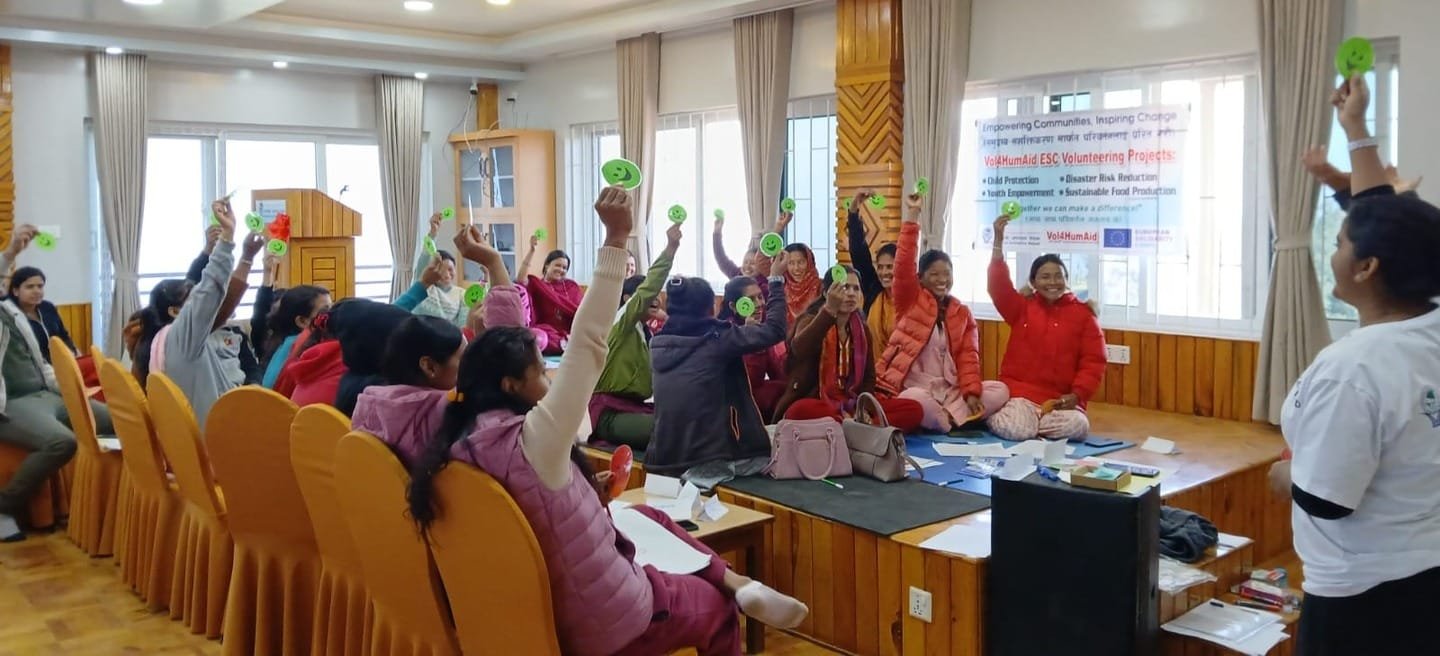
With a lot of flexibility!
All jokes aside, it is common for people to come to a session with an hour’s delay. Even if your workshop was announced days before, they might still make reminder calls to others on the spot. (Or, as it happened to us, one participant just jumped on his motorbike to gather the community.) Be prepared to welcome people joining halfway through the workshop as well.
Keep is short and simple—this holds true more than ever. Your participants are busy with their chores. Unless they see the direct use of your workshop for their farming, they cannot stay too long. Of course, offering planning with tea and biscuits at the end of the workshop does the trick sometimes, but you cannot provide that every time.
Remember to account for the translation time and process. Even in a room full of the best English speakers of Okhaldhunga, it is beneficial to have Nepali translation. Maybe your accent or choice of words is something they are not familiar with. Make your content accessible by planning translation after every concept, paragraph or even sentence. If your English speech is too long, your audience might lose interest. One small trick: if you’re preparing a bilingual flipchart, it is a nice way to show respect by having the Nepali script come first and in larger font than the English text. (Unless, of course, you are giving an English class, for example.)
Pick one clear message (or two) for a session of about 1 hour. Make sure your message is represented in every activity you choose. Pick an energiser that aligns with your topic, share a story, and give a brief presentation. Most importantly, you want to make them think and talk! Keep in mind that some people are illiterate, and many cannot read (or write) in English. One note about discussions: they are key to getting your message across; however, you will not understand most of what they say, and even with the best synchronous translation you will still be lagging behind. If you are used to facilitated discussions (as I am), you will have to scale it down.
About the ending… I’m a big fan of closing it with feedback and takeaways. Feedback can be as simple as a thumbs up or down. And takeaway can be something they write (or sketch) for themselves as the main message of the session. It helps if you briefly walk them through the activities and topics you covered in the workshop.
What can you give a workshop on?
Honestly, anything. The people I met were very happy to learn.
They know that people wearing the ViN T-shirt usually bring useful and important knowledge from a world they have little access to. In my experience, they have always listened with respect and curiosity (even if occasionally the discussion drifted to the health of their goats or when they saw us walking a few weeks earlier). I have done my best to approach them with the same level of respect and curiosity, so that I can also learn from their perspectives, both to improve my next workshop and to grow as a person.
Naturally, if your topic is more relevant or directly translatable to their everyday life, they will be more eager to learn and will get more out of it. Agriculture and skills such as tailoring or crafts are at the top of their priority list. If you have other skills that might be useful for them, share that. Make it as tangible for their reality as possible. For instance, if you want to talk about budgets, do not use an Excel sheet as most of them do not have regular computer access. I would also encourage you to do a workshop “just for fun”, such as painting, dancing or games. To ensure you choose the time and place, accordingly, spend some time interacting with the community before you deliver your first workshop. Attend other volunteer’s events, read their stories and guidelines, study their flipcharts. Let their experience inspire you.
Who will come to your workshop?
You will have to accept that some of it is out of your control. As an event manager who has worked in big cities in Europe, this was the biggest shock. The ‘RSVP to the Facebook event’ approach will not do the trick here.
It can be helpful if you create a digital flyer or invitation. The local style is more text-heavy, but a refreshing Canva design never hurt anyone. This flyer can be spread in messenger groups (e.g. of the youth clubs) or on the CLC page.
Nevertheless, a big percentage of the population (especially elders and those in more remote areas) do not have a smartphone. So, local ViN staff will call the community leaders and the specific list of event attendees, if you have one.
Do not be surprised if it is uncertain how many people will come. Once again, keep a flexible mind—and a flexible way to share the resources you use.
So here is what has worked best:
- If your topic is agriculture and directly relates to their job, you can plan for multiple-days and long hours.
- Depending on the seriousness of the topic, it can be justified to host the sessions as CLC. Examples of this might be first-aid training or legal processes.
- If you need certain technology, such as computers or video, once again CLC is the safe choice. Think again: do you really need that technology to get your message across?
- If you want to reach the general public, Saturday is the best day. But, it is hard to maintain regular and consistent attendance.
- If your topic is raising awareness (such as human rights, mental or physical health, etc), it is best to visit them closer to their homes, if possible after their existing meetings. Here, I would take into account people’s seasonal availability and plan these sessions during the winter (dry season).
- If you want to teach a skill, such as English, computer, tailoring, carpentry etc., regularity is key. Find the time and place that fits into their schedule. In this case, you will work with a smaller group of local people, but you will have the benefit of actually getting to know them. It might mean staying in the community to offer classes before or after school starts.
- If you want to work with a specific target group, such as English teachers, you have to take into account the schools breaks, exam periods etc.
To conclude…
The initial sessions put my trainer skills to the test. And my patience. However, through cooperation and feedback, we worked out enough contingency plans to cater to unpredictable context. As a result, even not knowing whether our workshop will take place in- or outdoors, in front of more women or men, with a smaller or larger group, we were still ready to make sure the message of the workshop got across.
If you have the chance, I encourage you to engage in workshop-style interactions with the locals. I enjoyed both: regular skills classes in the mornings, as I got to know a group of 8 students over the course of five months and I could truly see their skills improve; and community sessions in the more remote areas where we got to understand the local people, their aspirations and challenges a lot better. Even after several weeks, two sessions were never the same, so there is no risk of getting bored or lazy. I hope these tips will help you design and plan your session, and make you get the most out of your time in Okhaldhunga.
About Eszter Boros:

Eszter Boros is a trainer, career counsellor and founder, dedicated to guiding individuals through their career transitions. As a passionate hiker, hobby painter, restless traveller, and soon-to-be outdoor educator, she brings a diverse toolkit into her work. This is complemented by her global perspective, Eastern- European self-irony and German precision. At the core of her work are conscious choices, a balanced life, and a connection with nature.


